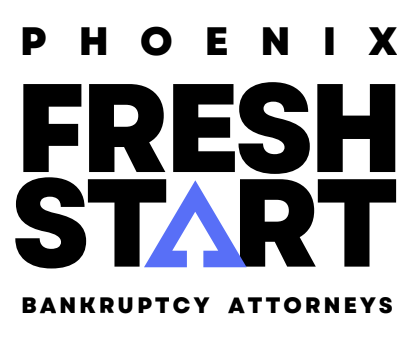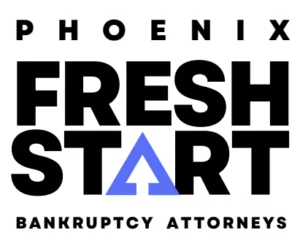Phoenix Bankruptcy Attorney Can Help
Have you ever wondered how to file for chapter 13 bankruptcy? You’re not alone. Many people run into trouble regarding personal finance when trying to figure out how to file for chapter 13 bankruptcy.
Luckily, there’s a way to learn more about filing for chapter 13 bankruptcy and staying afloat financially.
Our team at Phoenix Fresh Start are seasoned bankruptcy attorneys who know how to file for chapter 13 bankruptcy. We’ll explain the steps involved in this process and show you exactly how your case will be handled. If you think you need help with filing for Chapter 13 bankruptcy, do not hesitate—to reach out and get your questions answered by calling us right now.
How Our Phoenix Bankruptcy Attorney Can Help You
We know that when you need help navigating the ins and outs of filing for bankruptcy, it’s not easy finding a good lawyer to help you. There are many to choose from in Phoenix, and they all seem to claim they’re the best. But why should you file with our law office?
So here’s what makes us different: we’ve been helping people like you get a fresh start for many years. We have plenty of experience with all kinds of Chapter 13 cases, and we’re ready to take on any case, whether large or small. Our legal team works hard to make the entire process as straightforward as possible, so you can rest easy knowing that everything is being taken care of by professionals who will do what they can to give you this gift—a new financial start!
What is Chapter 13 Bankruptcy
 Chapter 13 refers to a bankruptcy case in the United States in which debtors reorganize their finances under court supervision and approval. Individuals and married people can file for Chapter 13 bankruptcy, even if they are self-employed or operate an unincorporated business.
Chapter 13 refers to a bankruptcy case in the United States in which debtors reorganize their finances under court supervision and approval. Individuals and married people can file for Chapter 13 bankruptcy, even if they are self-employed or operate an unincorporated business.
As part of a Chapter 13 reorganization, also known as a wage earner’s plan, debtors must submit and adhere to a plan to repay their outstanding lenders within three to five years.
In most cases, the repayment plan must provide a substantial payback to creditors, at least equal to what they might receive under other forms of bankruptcy. It must, if necessary, utilize 100 percent of the debtor’s disposable income.
Reasons to File a Chapter 13 Bankruptcy
As you may know, Chapter 13 bankruptcy is a reorganization plan that allows debtors to pay back their creditors over time rather than all at once. This means that instead of paying off your debts with one lump sum, you will be given a repayment plan—typically lasting three years—that allows you to set aside sufficient funds each month (if you can) to repay your creditors.
This can make it more manageable to pay back your debts since the payment is spread out over such a long period, and it can allow you some breathing room if other expenses have eaten up your monthly income. That’s why it may be worth considering whether a Chapter 13 bankruptcy might be right for you.
Filing a Chapter 13 Bankruptcy: Basic Steps
- Take the required credit counseling course.
Before filing for Chapter 13, you have about 180 days to take a credit counseling course from an agency approved by the U.S. Trustee Program of the Department of Justice. The session helps determine if you make enough money to pay your debts.
Most providers charge between $25 to $35 for the course. If you can’t afford to pay, you can get counseling for free or at a reduced rate. But people who file under Chapter 13 seldom qualify for the discount.
- Submit your Chapter 13 bankruptcy paperwork.
Your bankruptcy case starts when you file. Shortly after, the court clerk will send a letter to you, the trustee assigned to your case, and your creditors informing them of the automatic stay that prevents creditors from taking action in regards to you. The notice will have the deadlines for creditors and the date and time of the 341 meeting of creditors, which is the hearing to which everyone who files for bankruptcy must go.
You will have to pay a fee when you file for bankruptcy and send in your credit counseling certificate. The Federal Court Finder can be used to find the bankruptcy court in your area.
- Join the 341 meeting of creditors
You must give the trustee “521 documents” five days before the hearing. These documents could include tax returns, pay stubs, bank statements, and possibly more. At the hearing, the trustee will check your ID and ask you questions about why you filed for bankruptcy. Creditors can also come, but they don’t usually.
- Start making payments on your Chapter 13 plan.
Even though the court hasn’t approved or “confirmed” your proposed Chapter 13 plan, your monthly Chapter 13 payments will start the month after you file. The timing helps ensure that your Chapter 13 bankruptcy case will end on time, usually in five years.
If the bankruptcy court doesn’t agree with your plan, your payments will be returned by the trustee. Don’t count on getting your car payments back, though. Instead, your car lender will credit your account.
- Finish the steps to confirm Chapter 13
Your creditors and the trustee in your bankruptcy case will be able to object to your presented Chapter 13 repayment plan. If that happens, your lawyer will probably try to make modifications that make everyone happy.
Before approving your plan, the judge must be able to answer “yes” to the following questions after taking into account any arguments made at the plan confirmation hearing:
- Does the plan make sense? For example, does the person filing have enough money to make the monthly payment?
- Did the debtor come up with the plan? Or is the filer trying to control the bankruptcy process?
- Does the plan follow the bankruptcy rules? Does the filer pay creditors the minimum amounts that the law requires?
Before dismissing a Chapter 13 case, most judges give the filer more than one chance to fix a bad plan.
- Completion of the Chapter 13 Plan Confirmation
Before the court orders a debt discharge that wipes out the rest of your qualifying debts, you should make all of your payments, be up-to-date on child support and alimony, and finish a second course called “debtor’s education.”
Most people are free of debt after a bankruptcy discharge, except for their mortgages and student loans.
Contact our Arizona Bankruptcy Attorney Now!
Chapter 13 is a bankruptcy option that gives hope to those who have lost their way financially. It offers an opportunity for you to reform your financial situation by reducing debts under your current circumstances. It also helps you repair bad credit and can help eliminate debt completely. The steps outlined above on how to file Chapter 13 Bankruptcy are not applicable in every case but should be taken into consideration by anyone inquiring about this particular bankruptcy option.
Phoenix Fresh Start is here to provide answers and solutions during this trying time and looks forward to assisting you and helping you succeed in any way we can. Our bankruptcy attorney will help you understand your options for making sound financial decisions. If you are serious about filing Chapter 7 or Chapter 13, contact our Arizona Bankruptcy Lawyer now for a free consultation! We want to help you rebuild your life!



